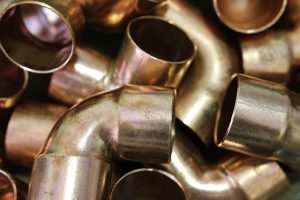
Also known as copper tubing, copper pipes are used extensively in plumbing and HVAC applications. It’s strong, durable and naturally protected against rust. And since copper is recyclable, it’s an environmentally friendly solution for these and other applications. While copper pipes have been around for over a half-century, though, many people are unfamiliar with how they are made. In this post, we’re going to explore the manufacturing process of copper pipes.
Smelting Raw Copper
The first step in the manufacturing process of copper pipes involves smelting raw copper. Raw copper is placed inside a large furnace where it’s heated to temperatures in excess of 2,400 degrees Fahrenheit. As the raw copper heats up, it turns from a solid state to a liquid state.
Smelting allows manufacturing companies to remove the impurities in raw copper. All raw, unprocessed copper contains trace amounts of impurities like nickel and zinc. When smelted, these and other impurities will separate from the copper. The pure copper is then transferred and used to manufacture pipes.
Forming the Pipes
The next step in the manufacturing process of copper pipes is formation. After the raw copper has been smelted, as well as purified through the removal of impurities, it’s transferred into a pipe-shaped casting. The casting is essentially a shell in the shape of a pipe. A worker pours the molten copper into the casting, after which he or she waits for it to cool.
The molten copper, of course, will harden as it cools. While still in a liquid state, the molten copper will distribute itself evenly throughout the casting. As it cools, it will harden to create a pipe in the same shape and size as the casting. Once this occurs, a worker will eject or otherwise remove the newly created copper pipe from the casting.
Finishing the Pipes
The final step in the manufacturing process of copper pipes involves resizing and cleaning. The newly created copper pipe is fed through a series of dies where it’s cut into one or more specific sizes. Next, the copper pipe is cleaned using water and/or solvents.
In Conclusion
Copper pipes are manufactured in three basic steps. First, raw copper is smelted in a large furnace. Next, it’s poured into a casting featuring the shape of a pipe. After being removed from the casting, the copper is cut and cleaned, at which point it’s ready to be shipped and sold.
